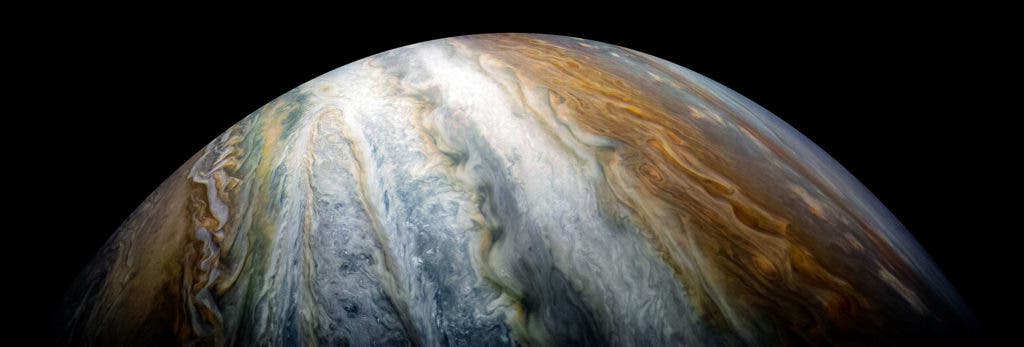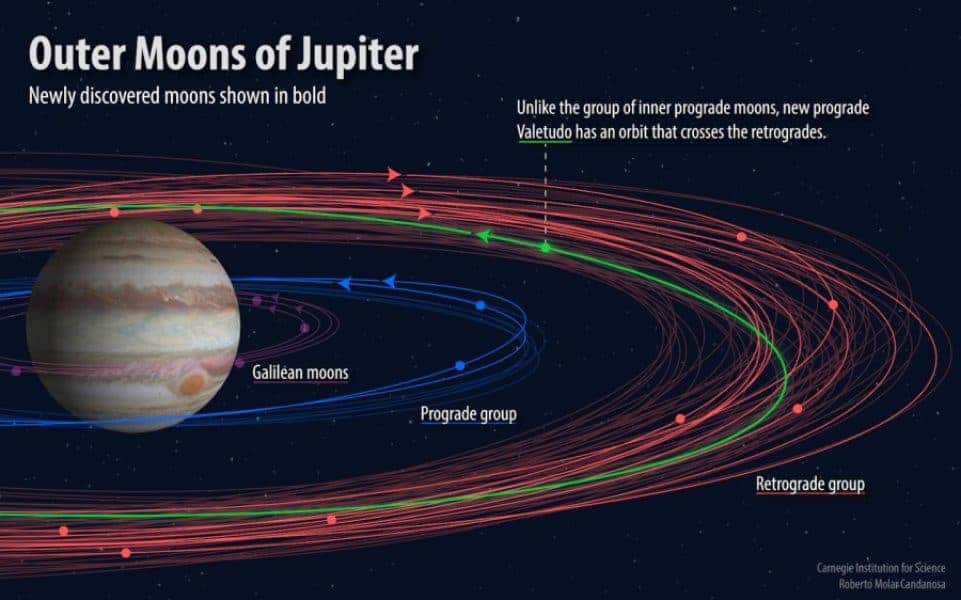Jupiter is definitely the most popular planet in the Solar System — at least as far as moons are concerned.

In Roman mythology, Jupiter (Zeus for the Greek) is quite the player. Never content to let a pretty mortal get by without his (usually unwanted) affections, the mythos abounds with the thunder god’s, um, transgressions. Which, quite understandably, gets everyone in deep trouble with his wife Juno (Hera in Greek mythology).
New research shows that the planet Jupiter is also quite happy to collect consorts. Twelve new moons have been discovered orbiting it, bringing the gas giant’s total collection to an impressive 79 moons — more than any other planet in the Solar System. One of these moons, according to the researchers who made the discovery, is an “oddball” that might help explain how the ochre giant got all of its moons. In a twist of mythological foreshadowing, it likely wasn’t a peaceful process.
New moons
The team from the Carnegie Institution for Science (story source) first spotted the moons in the spring of 2017. They weren’t looking for the moons per se — the team was actually looking for very distant objects in the Solar System as part of the hunt for Planet X, nestled somewhere far beyond Pluto. Some of the members involved in this research were actually part of the team that proposed the existence of this planet in the first place.
But back to the moons. As luck would have it, the researchers were simply looking in the right place at the right time to spot the gas giant — so they decided to have a look.
“Jupiter just happened to be in the sky near the search fields where we were looking for extremely distant Solar System objects, so we were serendipitously able to look for new moons around Jupiter while at the same time looking for planets at the fringes of our Solar System,” said team leader Scott Sheppard.
Based on these observations, members of the International Astronomical Union (IAU) calculated the orbits of the recorded bodies — and were surprised to see that they didn’t match any of Jupiter’s known moons.
“It takes several observations to confirm an object actually orbits around Jupiter,” said Gareth Williams, from the IAU’s Minor Planet Center, who was involved in the orbit calulations. “So, the whole process took a year.”

Image credits Roberto Molar-Candanosa / Carnegie Institution for Science.
Nine of these bodies are more distant relative to other Jovian moons, and orbit in retrograde — the opposite direction of the planet’s spin. These distant moons form at least three distinct orbital groups; the team believes they’re the remnants of larger bodies that broke apart during past collisions with asteroids, comets, or other moons. They generally take about two years to orbit their host planet.
Two others form a closer group that orbits in the prograde — the same direction as Jupiter’s rotation. Since they both have similar orbital distances and inclinations relative to Jupiter, they’re also likely remnants from a larger moon that since broke apart. They take just shy of a year to orbit Jupiter.
The most surprising moon, however, is the runt of the litter.
“Our other discovery is a real oddball and has an orbit like no other known Jovian moon,” Sheppard explained. “It’s also likely Jupiter’s smallest known moon, being less than one kilometer in diameter.”
This tiny moon has a more inclined orbit and keeps a wider berth to the planet that the prograde group. Its orbit crosses that of the outer, retrograde group, making head-on collisions much more likely between itself and this latter group.
This situation could explain how Jupiter got so many moons. Today, head-on collision would break any of the bodies “down to dust”, Shepard says, and could shatter a larger body into the tiny moons of today. It’s possible then that the current various moon groupings were formed in the distant past through such collisions.
The oddball itself could be all that remains of a much larger prograde moon that impacted with other bodies to create the retrograde group identified by the team. It has yet to be christened, but the name Valetudo (the Roman goddess of health and hygiene and Jupiter’s great-granddaughter) has been suggested.






